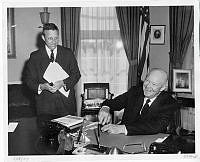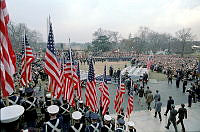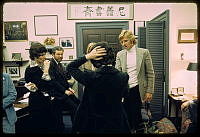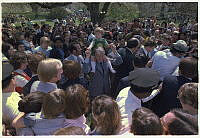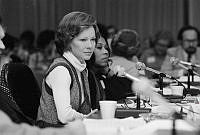Foreword; White House History Number 32
Fall 2012
Copyright © Fall 2012 White House Historical Association. All rights reserved under international copyright conventions. No part of this article may be reproduced or utilized in any form or by any means, electronic or mechanical, including photocopying, recording, or by any information storage and retrieval system, without permission in writing from the publisher. Requests for reprint permissions should be addressed to books@whha.org
We introduce costume to White House History in this issue, with plans for other issues on the subject. Looking good speaks for itself. For the president and first lady, it is a requirement. They need not be fashion plates, although some have been that, as, for example, Dolley Madison and Jacqueline Kennedy—and as you will see in this issue, Sarah Polk, Edith Wilson, and Frances Cleveland.

Edith Bolling Wilson, soignee in every particular, alights from a White House car in heavy rain about 1918. Hat, cape, long gloves, and reticule complement the shiny buckled shoes, with their Louis heels.
Library of CongressAt the White House the desired image mingles traditional simplicity with appropriateness. This was not so evident when Thomas Jefferson took office. He determined to illustrate at the President’s House “republican simplicity” in his hospitality as well as in what he wore. You will see in this issue that he made his point, then dropped the matter.
Casualness is hard to sustain, and can send an undesirable message of laxness, so some level of formality and organization has always been needed to frame the president and first lady in their house. We address this matter in articles on the uniforms of domestics and on the presidential valets, who often had the last word on style in what the presidents wore.














